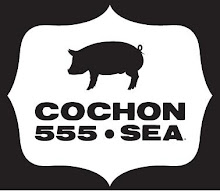Last week, the New York Times featured an article about the world-wide shortages of edible oils. It's a fascinating piece that's worth a closer look.
First, it's important to note that oil (palm, soy, and canola) is dietary staple in undeveloped countries. Fried foods--for better or worse--boost caloric intake where food is scarce.
Second, huge demand for biofuels has depleted what was once a cheap consumable commodity. It's also putting pressure on the land, as farmers in the tropical climates of Indonesia and Africa, deforest land to grow palms for profit.
Yet, according to the NYT article, it takes 8 years for an oil palm to reach full production.
In 2007, demand and depleted reserves...increased the price of palm oil nearly 70%.

"Cooking oil may seem a trifling expense in the West. But in the developing world, cooking oil is an important source of calories and represents one of the biggest cash outlays for poor families."
A few other points of note:
- An acre of oil palm trees yields the same quantity of oil...as 8 acres of soy beans
- In calories/acre of production, only sugar provides more calories than the oil palm tree
- In China, the release of a limited supply of cooking oil caused a human stampede -- killing 3 and injuring 31
- In response to the ban of trans fats in the West, exports of palm oil to America doubled in 2007.
Click here to read the full text.
Photo slideshow here.





